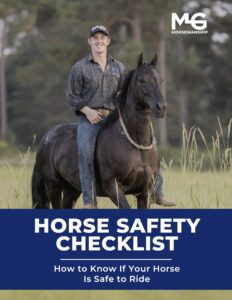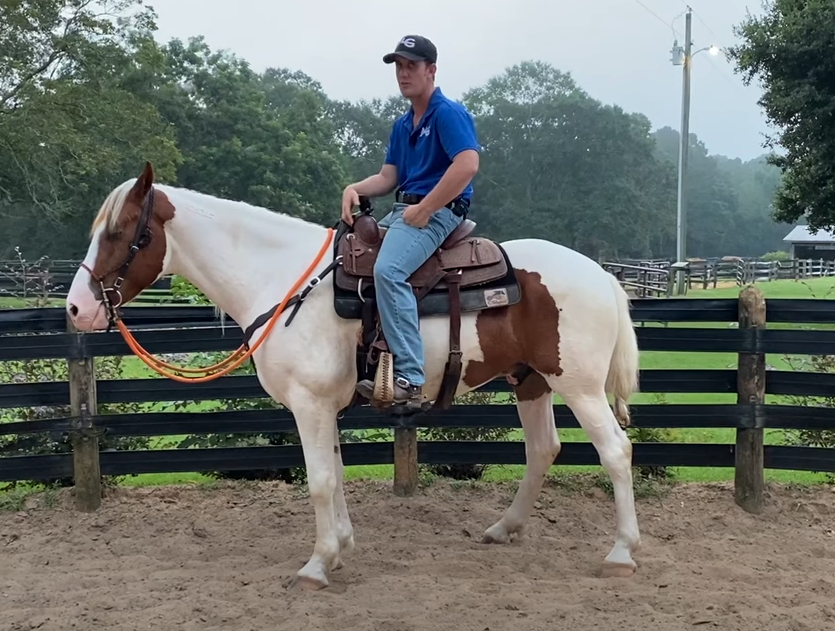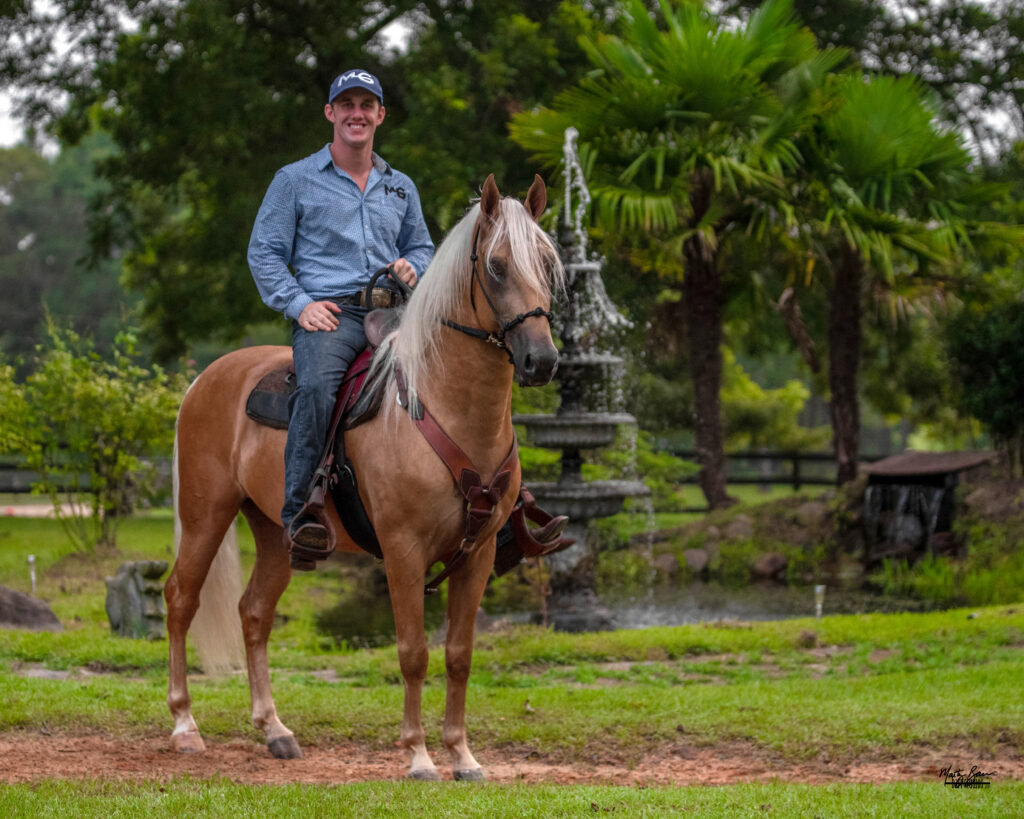Learn about three tracking with your horse!
Watch the Video Here or continue reading below!
What’s going on guys, so we’re bringing you another performance series video and this is called three tracking. Three tracking is just simply being able to go in a straight line and having the horse’s hips off center to the right or left. So, if we are moving the horse’s hip to the right, the front left leg is making a track line and the front right and the back left are making a track line and the inside back right leg is making a track line, hence the name three tracking.
Hips in, hips out
When I went to the School of Equestrian in Spain which is a dressage school, basically they had me do this, I mean every day for the first few days. They don’t call it three tracking, they call it, hips in, hips out, hips in, hips out. After days and days of this I felt like the karate kid, wax on, wax off. Okay, okay enough walking and trotting, hips in, hips out, hips in, hips out. What three tracking really does, is it loosens up the haunches for you and it gives you real good control of the horse’s butt. So much of lead departures and flying lead changes come from the control of that horse’s butt.
First and foremost, if you’re watching this video and you’re thinking about three tracking, you need to watch another video first. My pivot on the the forehand, pivot on the front feet video. You need to go back and watch that video because that’s really going to give you the button to move the horses haunches.
Install The Three Track Button
What we want to do is just make sure that we can put one of our legs a little further back on the horse. Where we show you how to disengage in the respect series of take their face and move it over there butt, that’s the manual override. Now we’re going to start installing a button. I want you just to be able to bring a leg back and move that butt around a little bit. Just like that, I am pushing his rear end around in a circle. Once you have that kind of kind of control, we’re simply going to take it onto the rail, where the horse is comfortable moving in a straight line.
HELPFUL TIPS TO THREE TRACKING
As we walk forward, to the right, we’re basically just going to bring our left leg, outside leg, back. We just want to move the horse off center, just move his hips a hair to the right. I would get in trouble when my horse would four track which means bringing his butt really far off the rail, and all four feet are on their separate line. Make sure to release him and move forward in a straight line after you have gotten several good steps. You might have to hold his shoulder a little bit to keep him from coming off the rail and you may have to put a little inside leg on the horse to keep him from coming off the rail.
Three Tracking Helps Lead Departures
We’re going to turn around and go back in this opposite direction. Do the same thing, bring his butt a little left, to the center of the arena. This is really going to help for your lead departures. All right, as we come down the straight line here I want to look straight where I’m going. If you notice I have both of my legs straight and even. He’s two tracking, which means his front feet and his back feet are making the same track. As I take my outside leg back we’re looking to three track, and keep his head straight with where we’re going. Just like that and I’ll turn around.
Start three tracking at a walk
Here I’m doing it with Fannie at a walk. You would like to get where you could do this at a trot ,and at a canter. Here is a pro tip, you might have to tip your horse’s nose out just a little bit towards the fence, but you don’t want to have to do that for long. Release them, when they have done it for several good steps. Now I’m going to come across this arena straight towards you. I’m going to be able to come straight at you here and put my right leg back. Notice how my horse is moving crooked now, three tracking, this would really set up my left lead departure. I should be able to switch and really the only thing that’s changing here is the slide of my legs.
Slide Your Legs Back A Little
Since you’ve already taught him how to pivot on the forehand, as your leg slides back you push his butt around with a very slight change in momentum. Another thing that that really helps, is picking up the hip. When we slide our leg back, we pick up that hip a little bit, and it really allows that butt to move off in that direction. The more you practice three tracking, the better he will get at the walk, trot, or canter. In the beginning just stay on the rail, move their butt over, and release them. If you get a step or two, release them, let them go forward again. Ask for a step or two, let them go forward again.
Motion Over Maneuver
Remember it’s motion over maneuver. It’s more important that we’re going forward than getting the three tracking because we can always add more three tracking. The better and better your horse gets, you should be able to see that at the walk, then at the trot, then at the canter. We’ll be already cantering to the right and we’ll push his hips to the right. Let’s take this horse right here and we’ll speed him up a little bit, and we’ll do the same thing. Right there, even gaiting he can move his hips over, good boy. We’ll come back and we’ll do the same thing at the canter. Look at the canter and you see how that shut down his forward motion, by pushing his hip over. This means he needs more practice at the canter moving his hip around.
In Conclusion of three tracking
Again, this is going to come in handy if your horse doesn’t have flying lead changes, or good lead departures. Or if you can’t tell them what lead to pick up whenever you’re departing. Your three tracking will help that. If his hip is over there to the left, he’s going to catch his left lead. If his hip’s over there to the right, he’s going to pick up his right lead. The long story short was in Spain, when they were telling me to do that wax on, wax off, hip in, hip out, three track, three track. What they were getting prepared for was flying lead changes. Then I can just switch leads by moving their butt around. That’s the reason that we want a three track. It’s really going to help our lead departures, flying lead changes, and overall control of the horse.
Well guys thank you so much! That’s the three tracking video, and I will see you in the next performance video!
Check out more free training resources HERE!
HOW SAFE IS YOUR HORSE?
Can you control every part of his body, even if he’s scared or unsure?
There are some specific things that I believe every horse should be able to do before they are considered completely safe to ride. So that you can see how safe your horse is to ride, I’ve created this FREE Horse Safety Checklist.





